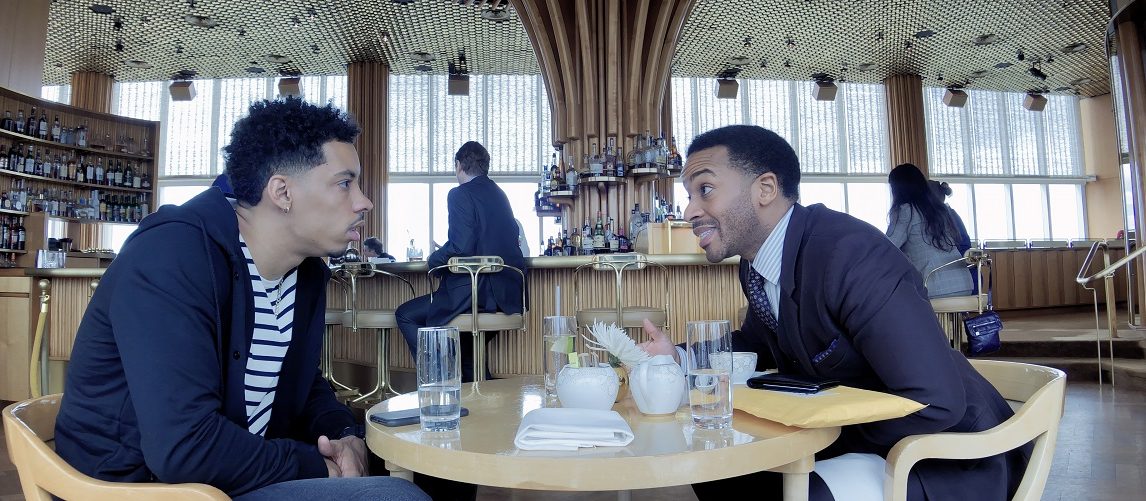
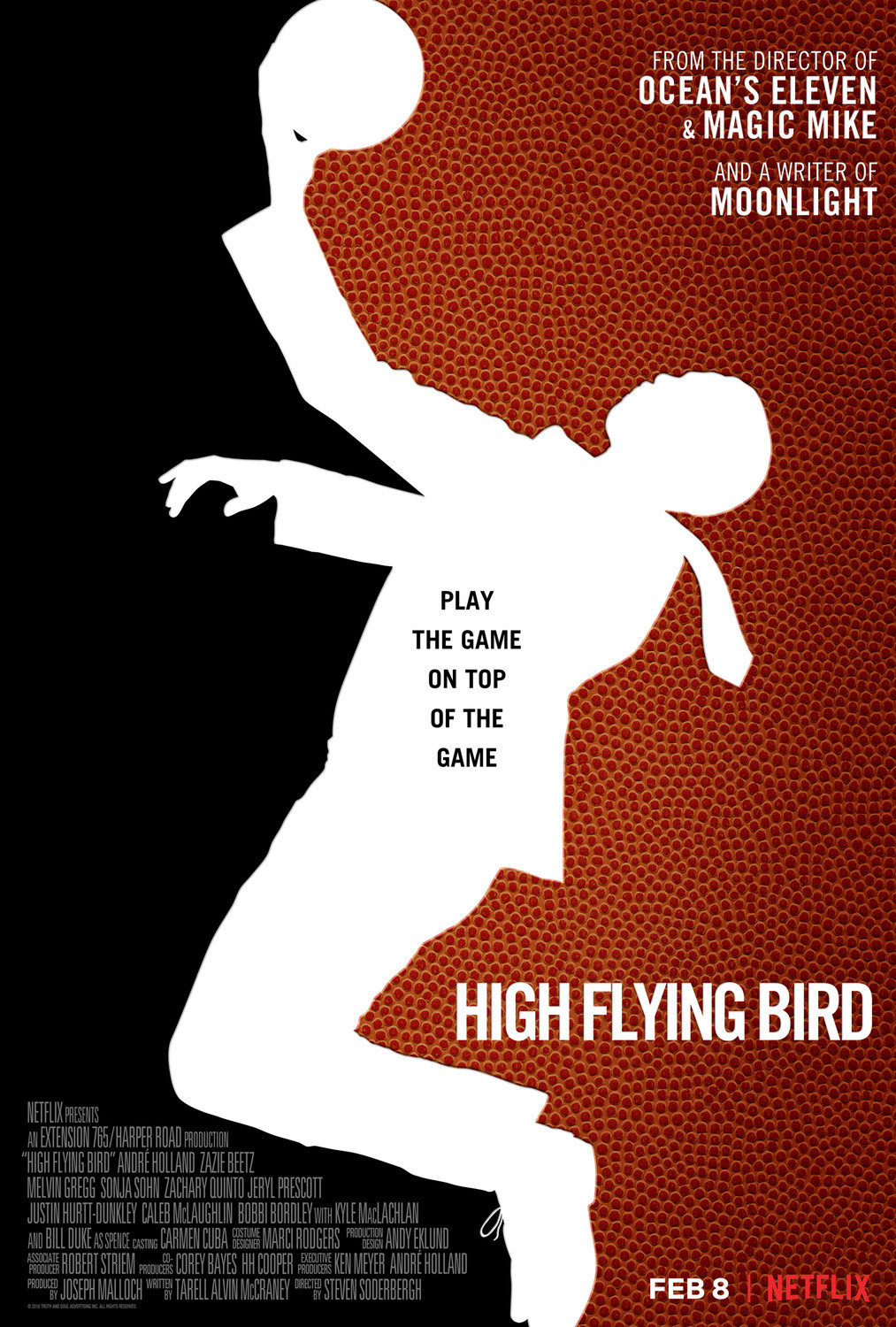
“Why make a man if only to watch him die?”
Steven Soderbergh has always fancied himself a bit of a renegade. He’s been upsetting norms since his debut helped kickstart the golden age of independent cinema. And while he’s frequently dipped his toes into commercial waters, he seems to enjoy interspersing those blockbuster ventures with enthusiastic experimental ones. In recent years, after the faux-retirement, he’s become enamored with form and process, launching his own distribution company to usurp industry marketing techniques and secretly shooting a horror film on an iPhone. High Flying Bird, his second iPhone film, is a fine little basketball-themed drama in its own right, though it’s nearly overshadowed by the exciting behind-the-scenes groundbreaking that proves so invigorating for aspiring filmmakers.
Tarell Alvin McCraney provides a smart script—truly the lifeblood of the film—that takes us into the world of fast-talking sports agents, profit-minded executives, and rookie draft picks during an NBA lockout, casting a wary eye on the business operations of the lucrative game.1 During a lockout, everything is frozen in a horrible limbo. Teams can’t execute trades or negotiate with free agents and players can’t access their team’s facilities, trainers, and medical staff. And obviously no one is playing televised games—the NBA’s product—and so no one gets paid. McCraney’s screenplay doesn’t just use the lockout as a backdrop but uses the complexity of the collective bargaining agreement to explore the harsh ecosystem that professional basketball players must navigate. It’s easy for an average joe to balk at the idea that any NBA player might be hurting financially when some of them are making $10M+ per season. But it’s not as easy for those players hanging on the fringe, grinding it out in the G league or overseas. Or for agents, assistants, scouts, junior high coaches, etc. who caught the spark when they were young and can’t turn their back on the game they love. McCraney’s script adeptly approaches the sport from a number of angles, though not at all from an actual athletic perspective. Instead, his focus is on backroom machinations. So instead of training montages, inspiring halftime speeches, and buzzer beaters, we’re treated to rich conversations about the culture, politics, and power struggles filtered through the lens of basketball.
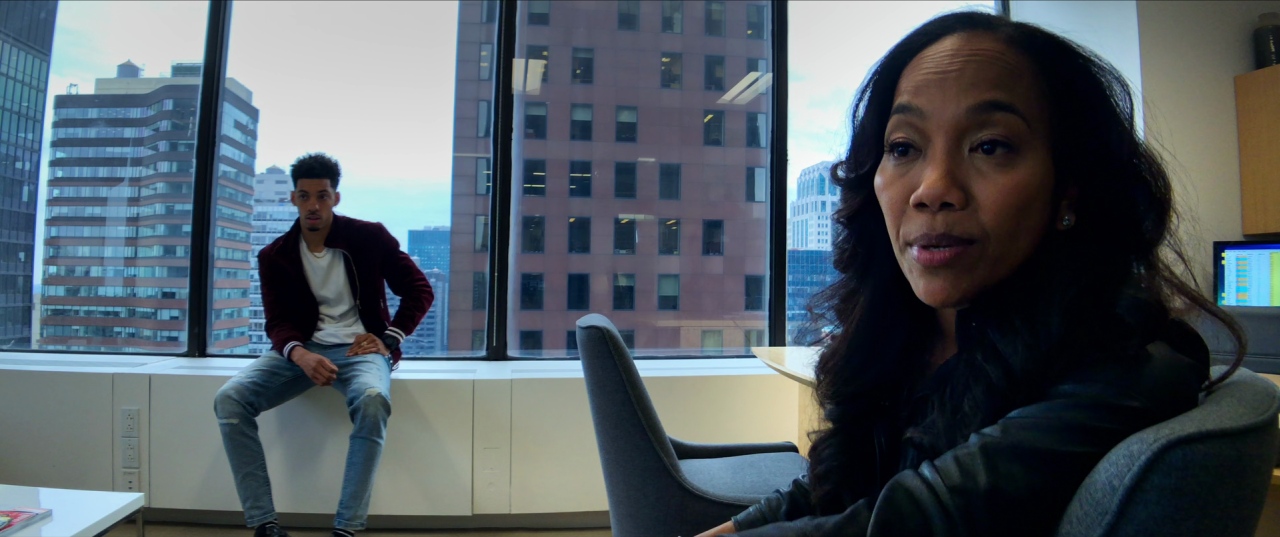
The film opens with player agent Ray Burke (André Holland) sitting down for a meal with his newest star client, number one draft pick Erick Scott (Melvin Gregg), who has yet to sign with the team that drafted him and so has not yet made a dime as a professional. After Burke’s company card is denied, he finds out that expense accounts and salaries are frozen at the agency. Forced to act or stand by while his clients, his professional career, and the game he loves suffer, he hatches a plan to resolve the conflict in short order. In a breakneck labyrinthine scheme that is formulated and executed over the course of three days (and is more than a little reminiscent of Soderbergh’s heist movies), Burke manipulates Scott into playing a possibly-contract-nullifying game of one-on-one with another rookie for publicity and viral clicks, enters negotiations with Netflix for an NBA alternative that could prove insanely lucrative for top players,2 and skitters around various corner offices to tangle with owners (Kyle MacLachlan) and executives (Sonja Sohn), risking his job and his relationships to get the players paid and the show running again.
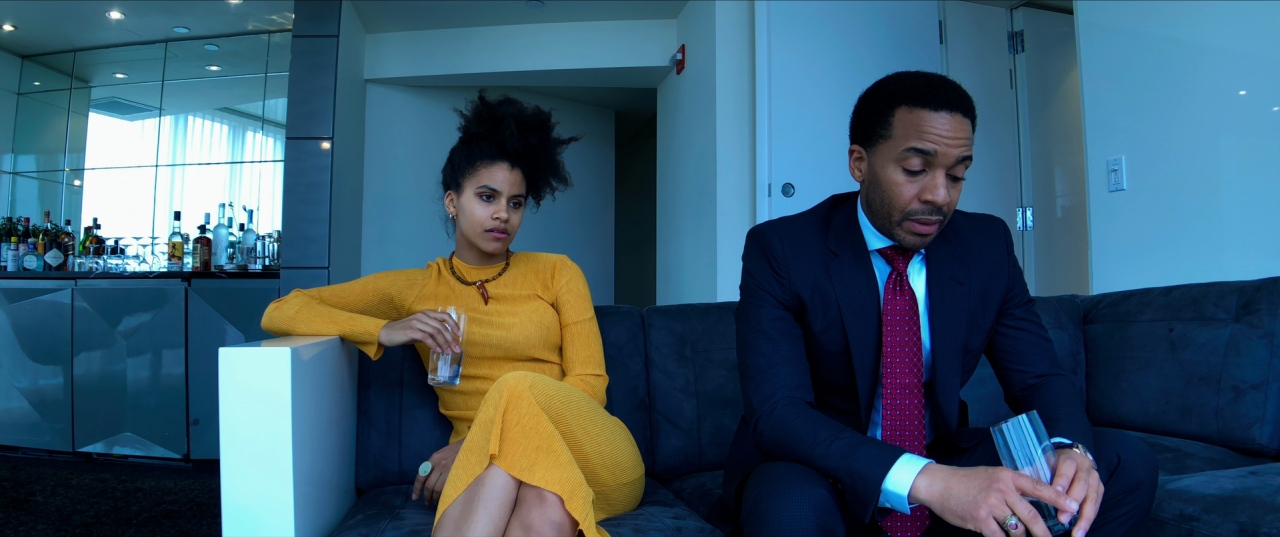
Like Moneyball, another talk-heavy sports-adjacent film that Soderbergh was initially slated to direct, High Flying Bird is about the business side of professional sports. In his vision for the film (which turned out just fine without him, by the way), it was a semi-documentary, featuring interviews with real players and sports personalities. He does that here, though on a much lesser scale due to budget constraints. Interviews with Reggie Jackson (who was a rookie for the 2011 lockout), Karl-Anthony Towns, and Donovan Mitchell, as well as short clips from various television anchors like Shannon Sharpe and Skip Bayless lend the film authenticity.
Beyond business, High Flying Bird also makes skillful use of a tense political backdrop. The fact of the matter is that most professional basketball players are black, while most owners are white. Those are non-debatable points. But what is on the table is how much those players deserve to be paid relative to their employers, whether their contracts should be able to restrict them from playing a game of pickup ball, if it’s morally justifiable to force them to move across the country when a trade is made for purely business reasons. Many commentators have taken the careful subtext of McCraney and Soderbergh’s film and produced lazy critiques of the NBA’s system—the same Marxist argument that is regularly foisted at free enterprise in general.
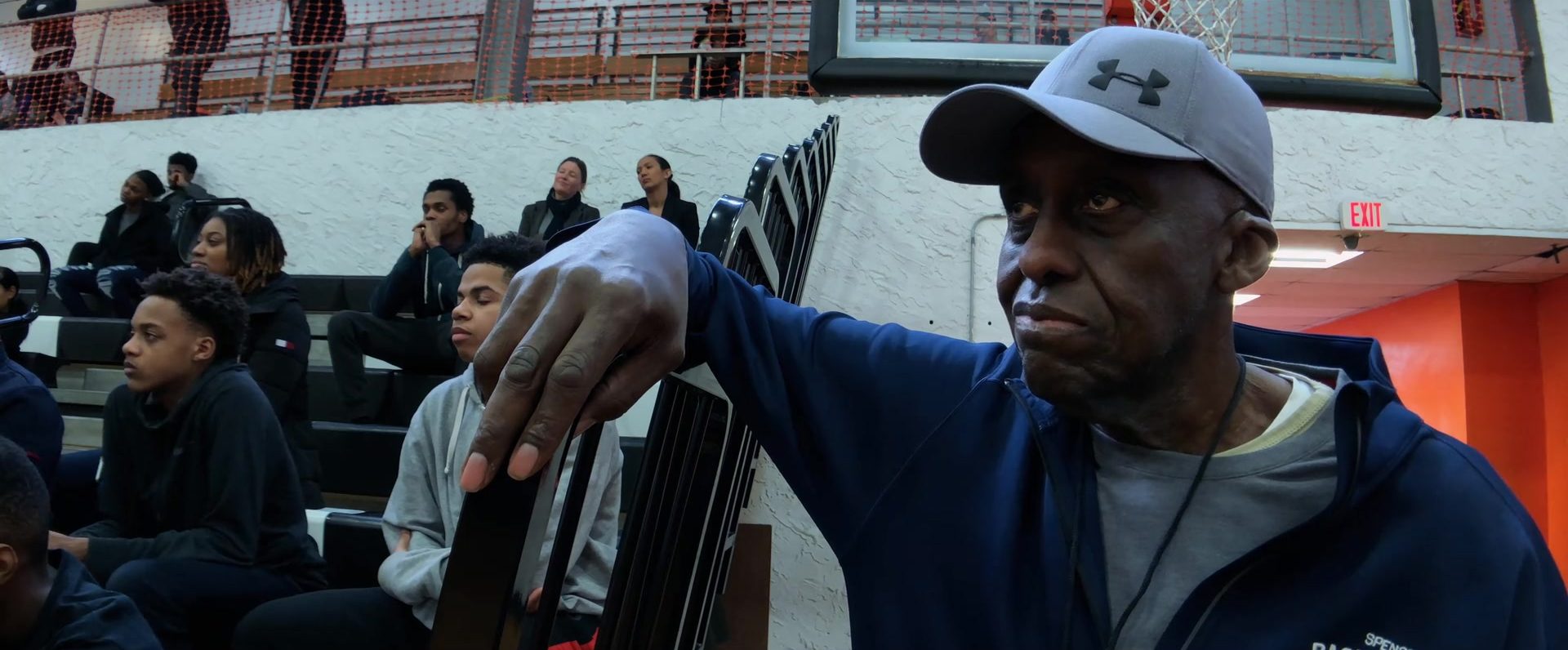
I’m no expert, but you don’t really need to be to grasp the gist of the situation. Players require some form of centralizing business structure in order to produce a lucrative product. This is provided for them by the NBA, with individual teams owned by businessmen who respond to financial incentives just like they do in any other business. There are many incredible athletes in the world, and since the masses seem willing and able to pay to watch those athletes participate in organized sports, they are ideal employees for a company that can provide arenas, training facilities, flights, scheduling, dietitians, doctors, coaches, trainers, managers, etc. to maximize the financial utility of that athlete. They are integral in generating the final product, of course, just as a skilled designer is vital to producing a car. But neither the athlete nor the designer, by virtue of their skill and labor, deserve to own the company that employs them.3 As for the accusation that the NBA is systemically racist, I find it moronic to hold that the NBA was racist pre-integration (obviously true), but is still somehow racist now that a free market has been allowed to determine that black athletes deserve more roster spots than white ones.
Thankfully, McCaney is smart enough to refrain from digging so far into politics as to derail his narrative momentum. He suggests “further reading” when Ray passes a copy of Harry Edwards’ The Revolt of the Black Athlete to Erick, but otherwise uses the political backdrop for character motivation and a smattering of conversations rather than outright activism. And when it comes closest to harsh commentary, it is delivered from the mouth of a venerable old youth basketball coach played by Bill Duke, a character that it is impossible to dislike. The whirlwind plot flies past in a blur, but there is additional solid character work from Zazie Beetz, Jeryl Prescott, and Caleb McLaughlin.
The hypothetical replacement for the NBA, which emerges from Twitter arguments and a viral one-on-one video to settle the score, never feels like a legitimate threat to the genuine product. Though it raises some interesting questions about how the business functions, its offered alternative is untenable and it’s hard to imagine any team owner actually quaking in their boots because a couple million people got excited about a ten second clip of a half-hearted pickup game in a high school gym.
But the real story here is the production of the film itself. It’s a triumph for low-tech, rapidfire filmmaking. The entirety of the film was captured with three iPhone 8s, the FiLMiC Pro app, the Moment 2X Tele lens, and a Moondog Labs 1.33x anamorphic adapter. Soderbergh had a rough cut of it ready to go only a few hours after the two week shoot. It’s pretty cool that a free market has made filmmaking tech so affordable that Soderbergh and other independent filmmakers can make quality films on a budget.
1. I’ve seen several sources indicate that the film is set during the 2011 NBA lockout, but I don’t think this is true. There are references to star players—I recall mention of Durant and Curry—that would not have made sense in 2011 because those players were not yet superstars. Initially, I was certain it could not have been 2011 because there is a reference to Kobe Bryant’s death, which occurred in January 2020—but the film came out in 2019! I am confused.
2. Interestingly enough, the film was picked up and distributed by Netflix after its completion.
3. Many non-athletes who work for large organizations do in fact own shares of their employer. My current employer even allows us to purchase company stock at a discount. Minuscule shareholding without operational control is not what the ideologues are suggesting.